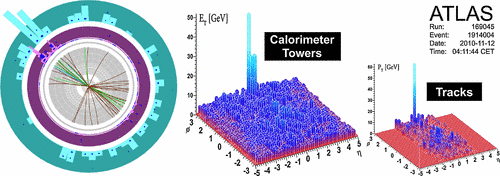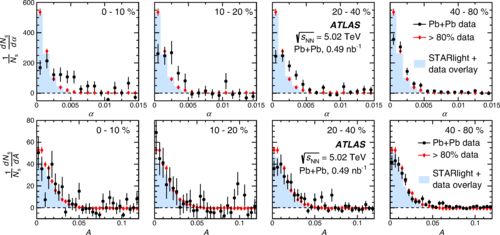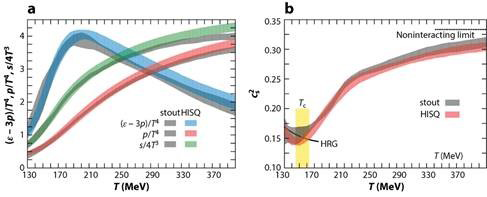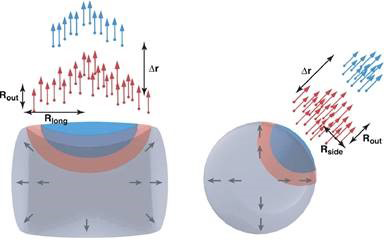LLNL researchers seek to better understand the properties of nuclear matter under extreme temperature, density, and pressure through the collisions of high-energy heavy ions.
Our research focuses specifically on the properties of the quark–gluon plasma, a state of matter generated through experiments at the Large Hadron Collider (ATLAS) and the Relativistic Heavy Ion Collider (sPHENIX). We study the quark–gluon plasma to understand its microscopic structure and reveal how its strongly interacting nature arises from the underlying interactions of quarks and gluons.
As part of the HotQCD Collaboration, we performed extensive studies of the space-time evolution of the collision through two-particle correlation, which led to the calculation of the quantum chromodynamics (QCD) equation of state using finite temperature lattice QCD.
The “jets” of particles that emerge when the high-energy quarks and gluons interact with the hot plasma help frame our current research interests, which include:
- Studying photon–nucleus interactions and modification of nuclear parton distribution by measuring jets in ultra-peripheral collisions
- Characterizing the microscopic structure of the medium by measuring jet substructure observables
- Completing model-to-data comparisons using the multi-stage jet evolution framework developed by the JETSCAPE Collaboration
Featured publications

Observation of a Centrality-Dependent Dijet Asymmetry in Lead-Lead Collisions at √sNN=2.76 TeV with the ATLAS Detector at the LHC | Phys. Rev. Lett., 2010
G. Aad, et al (ATLAS Collaboration)

Observation of Centrality-Dependent Acoplanarity for Muon Pairs Produced via Two-Photon Scattering in Pb+Pb Collisions at √sNN=5.02 TeV with the ATLAS Detector | Phys. Rev. Lett., 2018
M. Aaboud, et al (ATLAS Collaboration)

Lattice QCD Thermodynamics with Physical Quark Masses | Ann. Rev. Nucl. and Part. Sci., 2015
R.A. Soltz, et al

Femtoscopy in Relativistic Heavy Ion Collisions: Two Decades of Progress | Ann. Rev. Nucl. Part. Sci., 2005
M. Lisa, et al
People
Related links
- ATLAS Experiment
- JETSCAPE Collaboration
- sPHENIX Experiment
- Bringing the Big Bang into View (PDF), Science & Technology Review, September 2011




